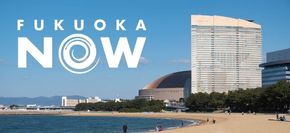Hirofumi Matsuzaki, after studying contemporary art in Germany, returned to his hometown of Futamatsu in Itoshima City to establish “Studio Kura.” In addition to founding the art company, he has been instrumental in launching innovative initiatives in the local art scene. These include an artist-in-residence program that hosts international artists for extended periods of creative work, as well as the “Itoshima Int’l Art Festival 2023 Itoshima Arts Farm.” This unique festival integrates the area’s sprawling agricultural landscapes and local communities into the artistic fabric of his projects.

Hirofumi Matsuzaki, after studying contemporary art in Germany, returned to his hometown of Futamatsu in Itoshima City to establish “Studio Kura.” In addition to founding the art company, he has been instrumental in launching innovative initiatives in the local art scene. These include an artist-in-residence program that hosts international artists for extended periods of creative work, as well as the “Itoshima Int’l Art Festival 2023 Itoshima Arts Farm.” This unique festival integrates the area’s sprawling agricultural landscapes and local communities into the artistic fabric of his projects.
What inspired you to pursue a career in art?
Interestingly, the inspiration came from a rather unexpected source. I was going through a period of uncertainty about my career choices when I happened to notice the word “ART” printed on the jacket I was wearing. It was an “aha” moment for me, and I thought, “Why not art?” Subsequently, I chose to major in oil painting when I enrolled in the art department at university.
Fascinating! What prompted you to study in Germany?
During my time at Hiroshima City University, I often collaborated with German exchange students on various projects. This experience piqued my interest in studying abroad. So, armed with my portfolio, I took the bold step of showing up unannounced on the exam day at a German university. Much to my surprise and delight, they allowed me to join classes right then and there (laughs).

What experiences did you have there?
After completing my studies at Hannover University of Applied Sciences, I immersed myself in the dynamic art community at Kunsthaus Tacheles in Berlin. This unique venue, set in a repurposed, dilapidated building, attracted artists from across the globe. It was a vibrant tapestry of graffiti art and also a renowned tourist attraction. The experience had a profound impact on me, influencing my artistic perspectives.
However, you eventually felt a pull to return to Japan?
Yes, precisely. At some point, I felt an overpowering urge to return to my homeland. I came to the realization that for a Japanese artist like myself, exclusively pursuing European-style conceptual art wouldn’t yield an authentic expression of my craft. I felt the need to explore and perfect artistic forms that resonate more closely with my cultural roots.

What are your aspirations for your work in your hometown?
I’ve been deeply engaged in “Generative Art,” a form of art that leverages computer algorithms to produce shapes and forms in a semi-random manner. For instance, the final artwork might change based on the day’s weather or temperature. It’s an exhilarating process because the outcome remains uncertain until you actually go through with it.
When I initially moved back to Itoshima, I started by teaching painting classes. However, I soon realized that my true calling was to establish a localized version of Generative Art.

Interesting! So, you’re essentially weaving the local community and its people into your grand artistic vision?
Exactly. Our artist-in-residence program attracts about ten artists from around the globe each month. I find it incredibly inspiring to witness what they’ll create and uncover while immersing themselves in this community.

How do you currently perceive Itoshima?
Before going to Germany, I used to see Itoshima merely as “the countryside.” However, my return has drastically altered my viewpoint. Even visiting artists are captivated by the unique contours of the mountains and the resplendent hues of the sunset. Their reactions have led me to rediscover and appreciate the nuanced beauty of my hometown in a whole new light.
The ‘Itoshima Int’l Art Festival 2023 Itoshima Arts Farm (Itoshima Geinou)’ event has thrived due to the incredible generosity and collaboration of our local community. Now in its sixth year, we acknowledge that the event has posed some inconveniences for many. Yet, even though the majority of the community may not be well-versed in contemporary art, their open-minded acceptance has been nothing short of inspiring, and for that, I am profoundly grateful.
It appears that your wife, Saori, has been a strong pillar of support for you, especially since your days in Germany.
Saori: Indeed, while he leads a life that many would consider daring and adventurous, he can be surprisingly prone to bouts of self-doubt (laughs). After we returned from Germany to Itoshima, he was disheartened, lamenting that his art classes weren’t attracting any students. Despite this, I constantly reassured him, saying, “Things will work out.” Having spent much of my life in conventional employment, I understand that there are countless “average” individuals who yearn for a more extraordinary life. It’s for this reason that I encourage him to forge ahead and realize his aspirations to the fullest.

Finally, tell us about your future dreams?
My vision is to transform the vicinity of our studio into a vibrant hub for artists. Individuals with artistic inclinations possess a unique sensibility that draws them to specific locales. Globally, it’s evident that these kinds of gathering spots often serve as the birthplaces of new cultural movements. Remarkably, the biennial ‘Itoshima Int’l Art Festival 2023 Itoshima Arts Farm ‘ event has already attracted several individuals to settle in this area. As we strive to preserve the agricultural heritage and natural beauty of Itoshima, my goal is to cultivate it into a thriving community where creative minds increasingly converge.
Writer’s Comment:
Throughout the interview, I was struck by the sensory-driven nature of Mr. Matsuzaki’s life. He has an inclination to immediately immerse himself in what captures his interest, and he does so on an international scale. Despite his seemingly carefree and enviable lifestyle, he is prone to moments of worry and self-doubt after diving into new ventures. Offering a counterbalance to this is his wife, Saori, who serves as a grounding force. She advises, “Think carefully before you start, and be forgiving of minor setbacks once you’re in motion.” Their complementary personalities appear to be the driving force behind the success and dynamism of Studio Kura.
Interview & text by Leyla / Photography by Seiji Watanabe / Edited by: Emiko Szasz









